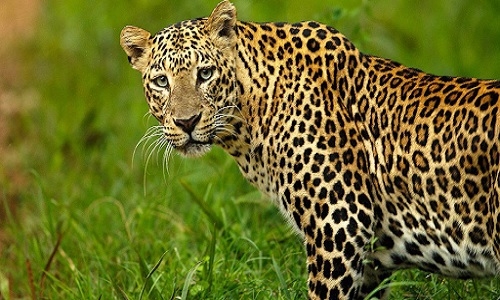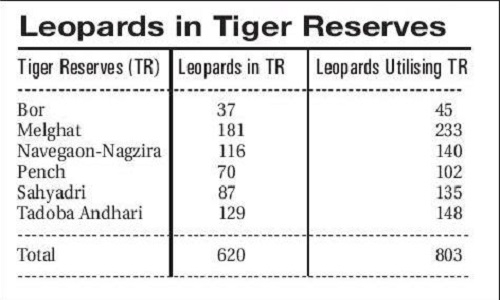As Leopard numbers rise Mah count is now 2nd highest in India: 1,985
| Date :01-Mar-2024 |

By Kaushik Bhattacharya
While Maharashtra becomes the second highest State in the country in leopard count, major threats of man-animal conflicts and targeted poaching for leopard’s body parts have also increased, reveals a report on ‘Status of Leopards in India 2022’ released by Union Minister for Environment Bhupender Yadav on Thursday. As per the ‘Leopard Status Report 2022’, Maharashtra has 1,985 leopards, which is second to the leopard population -- 3,907 -- in Madhya Pradesh. There were 1,690 leopards in Maharashtra in 2018 and, in four years till 2022, the number in the State increased by 295. Among these, a major population (75%) resides outside the Protected Area (PA) network, the report states. Vidarbha region has most of the Tiger Reserves, such as Bor, Tadoba-Andhari, Nawegaon-Nagzira, Pench, and Melghat. It also encompasses sanctuaries like Painganga, Tipeshwar, Umred-Pauni-Karhandla and large forest patches in territorial forest divisions such as Chandrapur, Central Chanda, Wardha, Yavatmal, and Gadchiroli. The leopard densities within Vidarbha is moderate to high, the report stated.

The density has increased in the Chandrapur and Bramhapuri territorial divisions, Melghat and Tadoba Andhari Tiger Reserves (TATR) since previous countrywide estimates of 2018. Chandrapur, Bramhapuri and TATR divisions have witnessing the highest man-animal conflict in recent time. Tiger and leopard densities both are occurring at same scale within this region. Therefore, the report raised concern about the increase of threat to leopards in this region. “This proximity to human habitation makes them more vulnerable to poaching and human leopard conflict. Among the large carnivores found in India, leopards are the most poached species,” it stated. “The Vidarbha regions which comes under the Central Indian landscape stands out as a hotspot for leopard poaching, with a bias towards the poaching of males. Poaching of large carnivores may alter demography, behaviour of the target species also leaves cascading impact on the native biodiversity,” mentioned in the report.
The report also stated, beyond poaching, habitat fragmentation due to developmental activities such as the development of linear infrastructure and mining poses significant threats to leopards in this landscape. Rich in coal and mineral reserves, this region serves as a crucial link connecting major economic hubs through a network of roads and railways that intersect its biodiverse forest habitats. With the leopard population expected to increase in the future, a concerted effort toward long-term monitoring, coupled with a deeper understanding of their natural history and behaviour, is imperative to devise effective management strategies, it suggested. “The increase in the number of leopards and tigers in a good news, but it will also increase the responsibility of the Forest Department to give more attention to protection in territorial areas and prevent the human wildlife conflict,” Ajinkya Bhatkar, Honorary Wildlife Warden told ‘The Hitavada’. “The support of other line departments also needed in wildlife conservation to support the increased population,” he added.